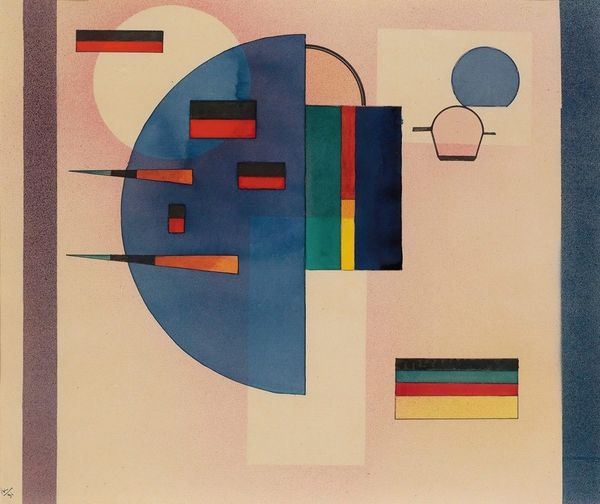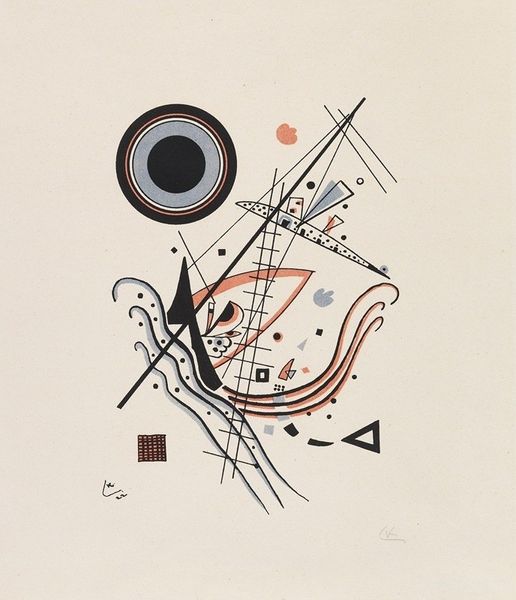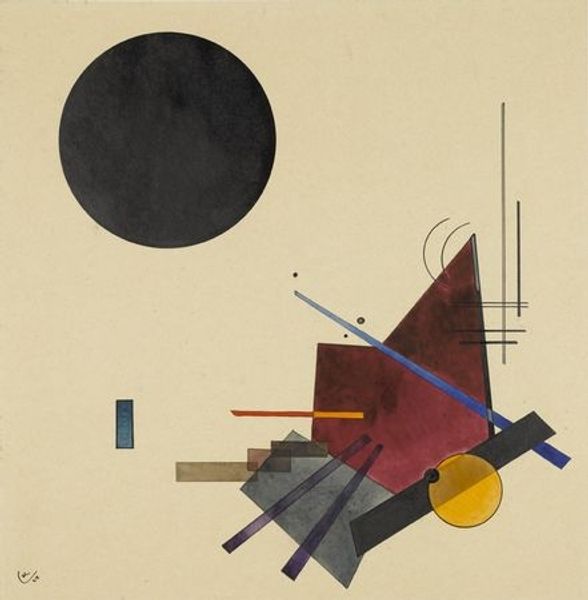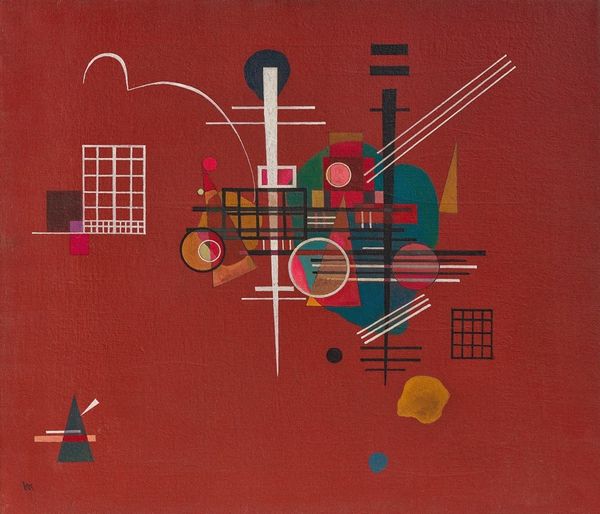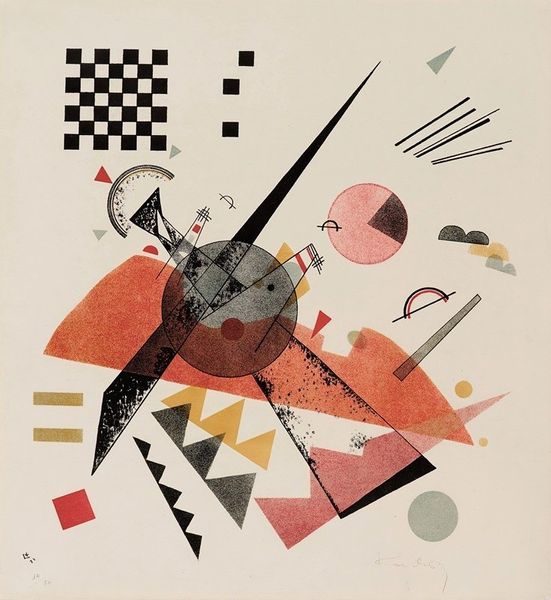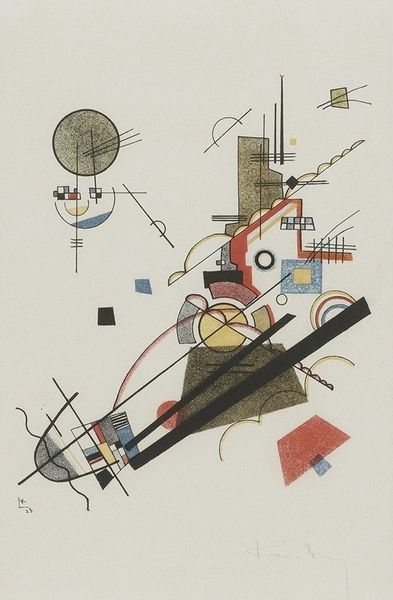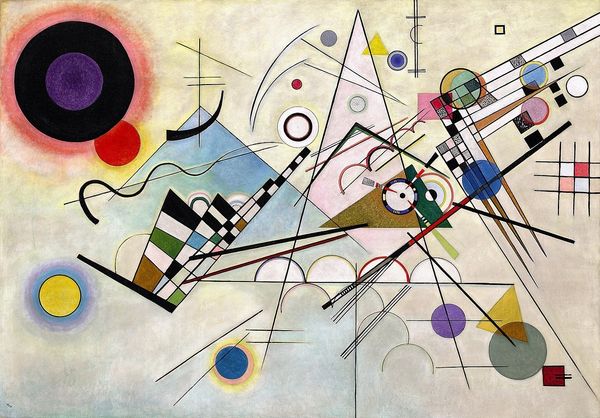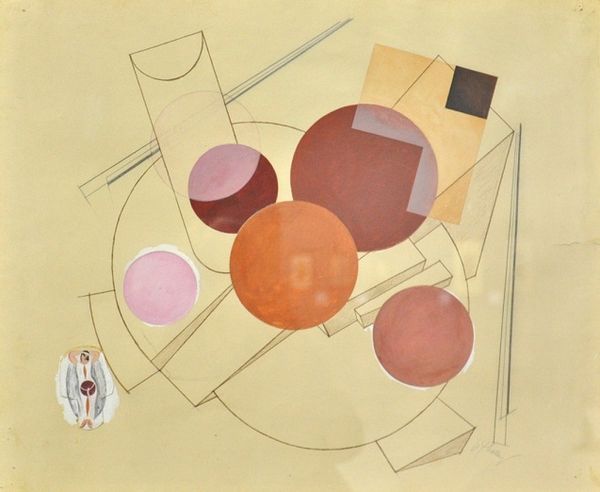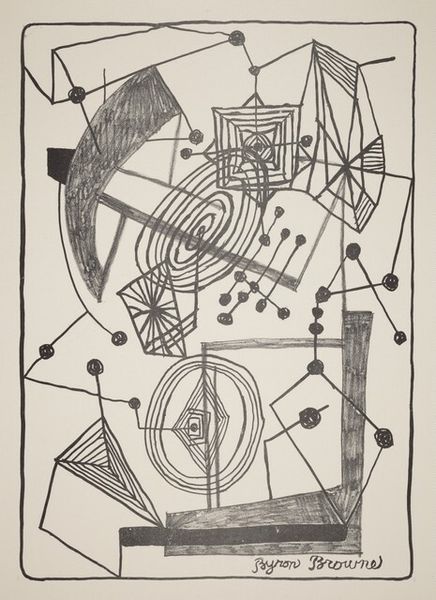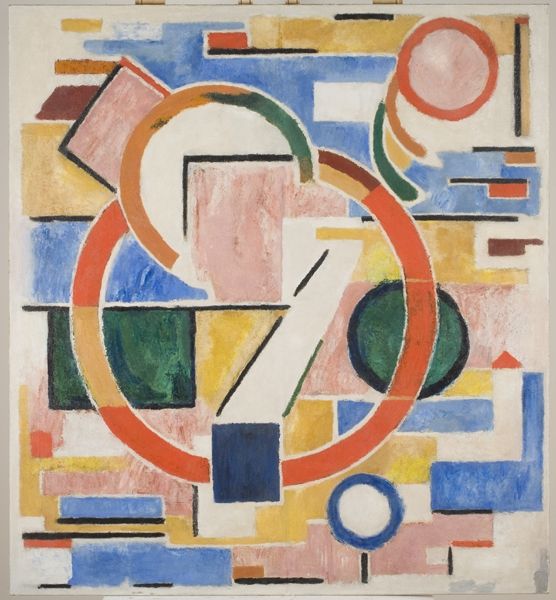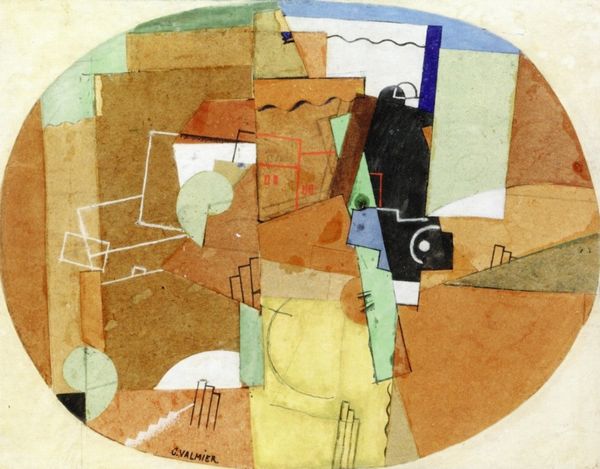
Copyright: Public Domain: Artvee
Editor: Here we have Wassily Kandinsky's "Light Circle," created in 1922 using tempera and acrylic paint. The geometric forms and vibrant colors give it such a playful, almost musical feel. What do you see in this piece? Curator: Beyond its aesthetic qualities, this painting exists within a specific historical and social context: the Bauhaus movement. Kandinsky’s exploration of geometric forms wasn't merely decorative; it was a radical reimagining of art’s function within society. He sought a universal visual language, one that transcended cultural and linguistic barriers, and promoted communication through pure abstraction. How do you think this resonates with broader societal shifts of the early 20th century? Editor: I guess it's about simplification? Taking things down to basic forms, sort of like how mass production streamlined objects at the time? Curator: Precisely! It's a visual parallel to the era's focus on efficiency and universality. Furthermore, we can interpret the "Light Circle" through the lens of power dynamics. Kandinsky, while a male artist, was advocating for a break from traditional artistic hierarchies. Abstraction, for him, represented liberation from the constraints of representation and challenged academic conventions dominated by patriarchal structures. Can you see how that subversive potential connects with other forms of social and political activism? Editor: So, he wasn't just playing with shapes; he was making a statement about who gets to define art and its purpose? That’s so interesting; it makes the painting much more powerful! Curator: Exactly. By deconstructing representational forms, he invited viewers to engage with art on a more intuitive, emotional level. It was a step towards democratizing the artistic experience. Editor: I always thought of abstract art as just, well, abstract. But framing it as a response to its time, and a challenge to established power structures, gives it so much more depth. Curator: Indeed. It reminds us that even seemingly apolitical forms of expression can carry significant cultural weight. I look at this piece and realize now it’s not just art but an appeal, for an open mind and inclusive societies.
Comments
No comments
Be the first to comment and join the conversation on the ultimate creative platform.
